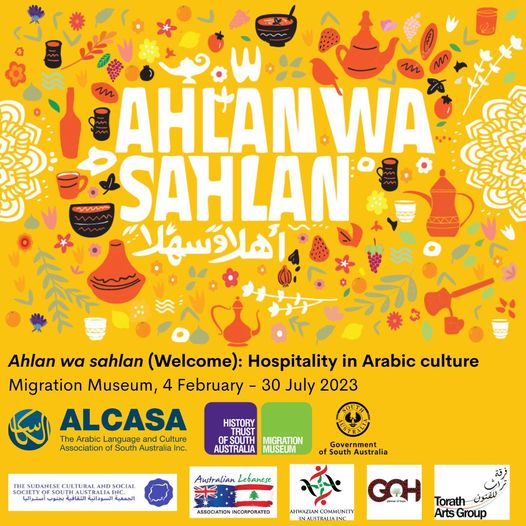
Recipe Cards
An inclusive culture allows people to feel comfortable for being themselves. This is exactly how it felt as minority language speakers when we embarked in developing the exhibition Ahlan Wa Sahlan (Welcome): Hospitalty in Arabic Culture, under the guidance of the HTSA Migration Museum.
The highly skilled Museum’s staff paved the way to construct the exhibition around personal stories and objects of personal value, the more we developed our stories the better we felt the strength and value of our intercultural connections. As a matter of fact, the exhibition allows to explore cultural and social connections, to reflect on identity, and support diversity. In many comments in the exhibition’s Guest Book, we notice the word “educational”, a quality that has been extended in the exhibition’s display by offering a kid’s trail to encourage meaningful cultural explorations. Additionally, the exhibition includes a video to explore and learn Arabic, a recipes collection to inspire culinary experimentation, a sensory station to enhance engagement and motivate learning. There are also four educational videos offering insights into the exhibition’s production at the Education at History Trust of South Australia and one video about the first Community Workshop on 28 August 2022.
We were delighted to receive recently the following teacher feedback about using the exhibition “Ahlan Wa Sahlan” to set up High School assignments in a reputable languages school.
“My experience with the Ahlan Wa Sahlan exhibition has been beyond expectations.
I invited my SACE Arabic language students to visit the exhibition and write a review about it as part of their SACE assessments. The joy and learning were beyond academia and went deeper into their childhood memories. As one of my students shared stories of her childhood using one of the exhibited items. Another student was surprised that both Sudan and Egypt have so many similarities. I would highly recommend that all teachers that are interested in hospitality and culture share this exhibition with their students so that their students can connect with each others and even their inner-self with memories of grandparents and family life wherever they are in time and place.”
Majeda Rizk, Arabic Teacher, School of Languages
To all SA language teachers, we invite you to use the exhibition as an educational resource, not only to explore Arabic traditions but also to teach about cultural diversity, belonging and inclusion.
Fayrouz Ajaka
ALCASA Chairperson

Ahlan Wa Sahlan (Welcome): Hospitality in Arabic Language
SHARE
